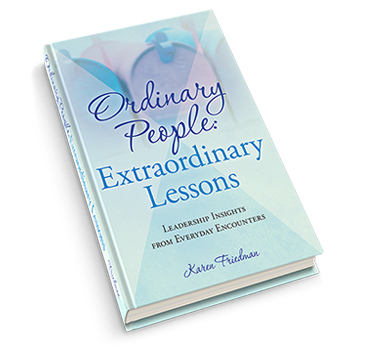I am a proud alumnus of Pennsylvania State University so you can imagine my excitement when graduating students asked me to deliver the commencement speech at one of the campuses. I probably spent more time preparing this speech than any I’ve ever given because it was so close to my heart. Over the years I’ve heard from a few of those former students who tell me they still remember some of what I said.
Obviously flattered, but mostly curious, when I’ve asked what they recall, they’ve all said the same thing. They said they remember the stories I told.
Before every talk, presentation, meeting, interview or slide show it’s essential to think about the story you want to tell and how stories within that story can bring your content to life.
What is the goal of your talk or presentation? What are the key takeaways you want your audience to remember? What do you want them to feel, do or know when you are done speaking?
Your story must be clearly defined to help listeners understand how your ideas and insights can address their challenges and help them accomplish their goals. To do this, you must look for ways to personalize information.
An insurance company president I worked with was preparing to deliver a keynote address to several thousand colleagues who were edgy about significant challenges facing their business. He really wanted to shine so he hired a professional speechwriter and then asked me to help him with style, delivery and speaking techniques. While I have written more than a few speeches in my day, I am not an executive speechwriter. That said, when I read the speech, something about it really bothered me so I decided to be as blunt as possible even though I knew it might upset him given the time and money he had already invested. Here is part of an e-mail I sent to him:
“The speech sounds like it’s trying to convince people to feel optimistic…instead of really being optimistic. It uses negative words instead of energizing and tries too hard to add little pithy analogies and quotes that miss the mark. Most importantly, it does not have personality and doesn’t capture who you are — warm, caring, proud… and it certainly doesn’t tell the story your audience wants to hear… It seems to talk at them, instead of having a conversation with them. I believe speeches should be personal; you have to bring people into the fold and make them feel that you get them … that you really understand your audience … you have to humanize your thoughts and words so it truly reflects who you are and tells the story you want to tell…”
What resulted was a different approach; a brainstorming session to identify the story and create a theme which was simple: “Imagine the Possibilities.” Once you know the story you want to tell, everything else will fall into place.
Without vignettes and stories, a speech or talk is nothing more than a bunch of words void of meaning and impact. But because many of us fear not being taken seriously or risking credibility, instead of using stories to enhance understanding and achieve outcomes, we often lapse into what I call “presentation mode” which is typically boring and robotic. Via the use of good stories, you can avoid this presentation-killing death spiral.
- What is the story YOU want to tell? What is the story your audience wants to hear?
- Remember to tell the story as opposed to going through all the details of your slides. Does your audience really care about the mathematical formulas or complex charts you devised to make your points? If you’re leaning on these devices, you’re likely way too complicated for most of your audience.
- Keep it simple! Limit the information and think “audience.” What does management really want to know versus everything you think you need to tell them? They don’t need all the code numbers and legislative details. Decide what they really want or need to know, especially if you only have a few minutes to tell them.
- The blessing and the curse is that you know a lot! But not everyone wants to know everything that you know. What they care about is whatever’s genuinely critical in terms of what they came to hear you explain. Remember, stories are not what you care about… Stories are what other people care about.








Leave a Reply
You must be logged in to post a comment.